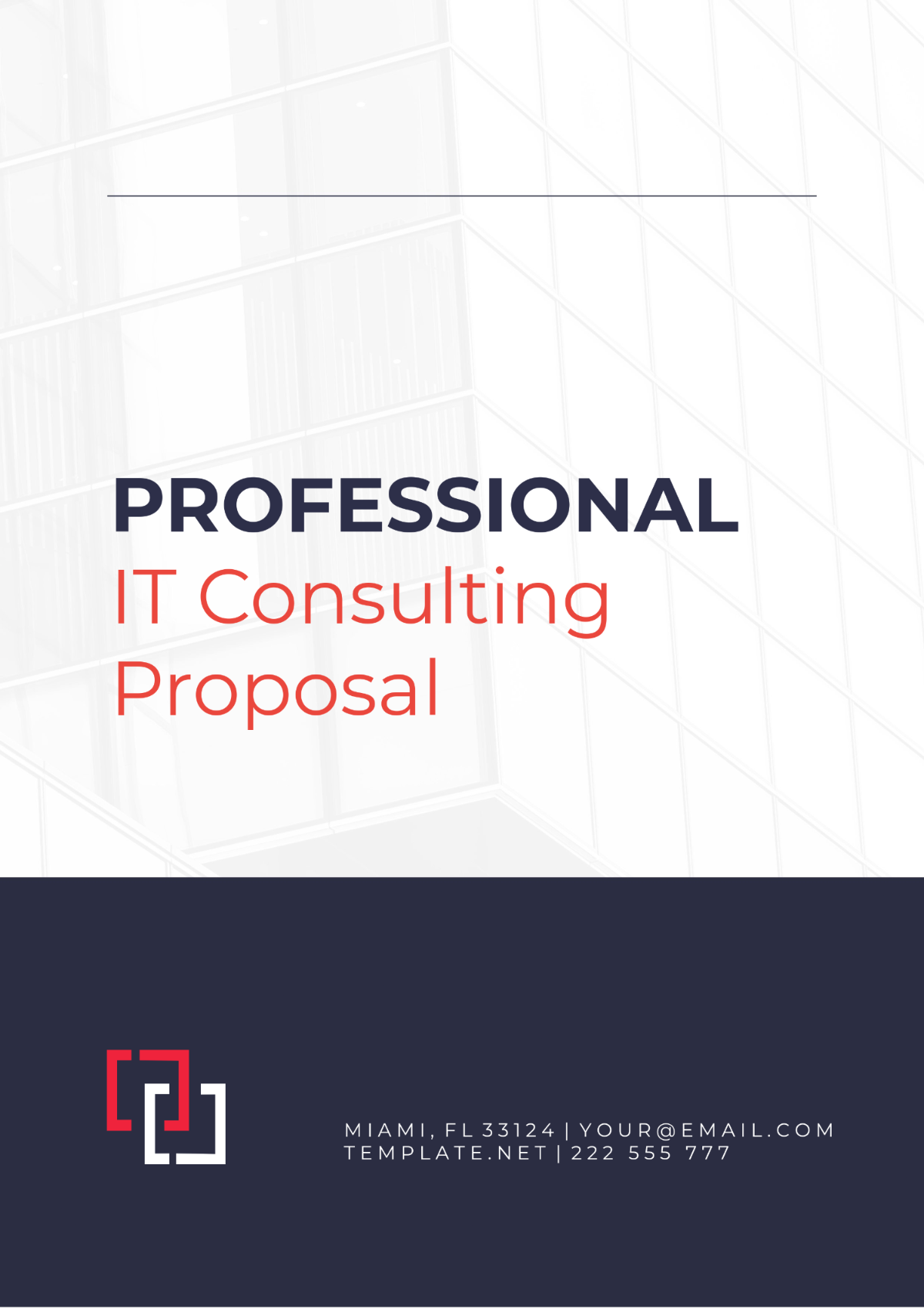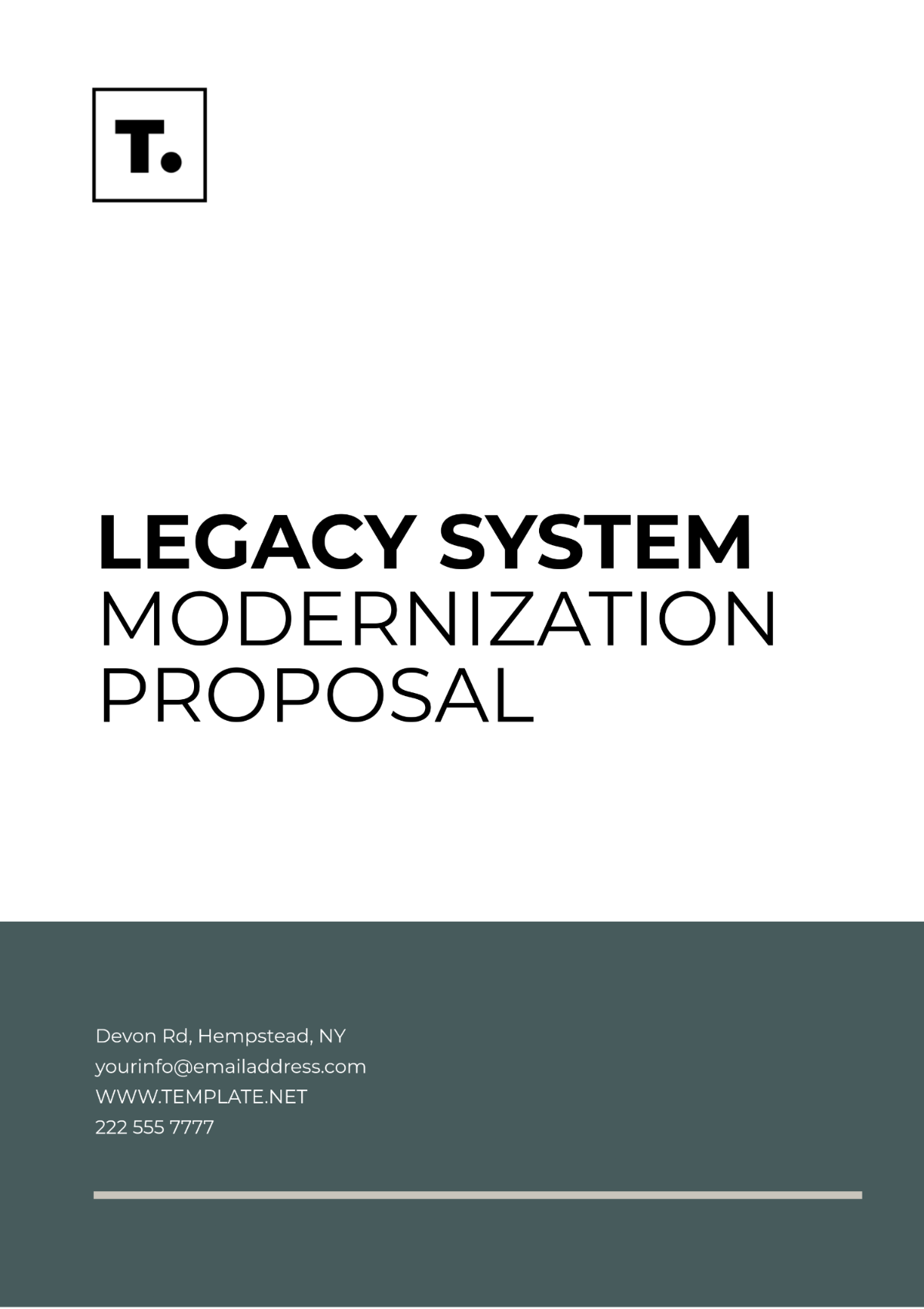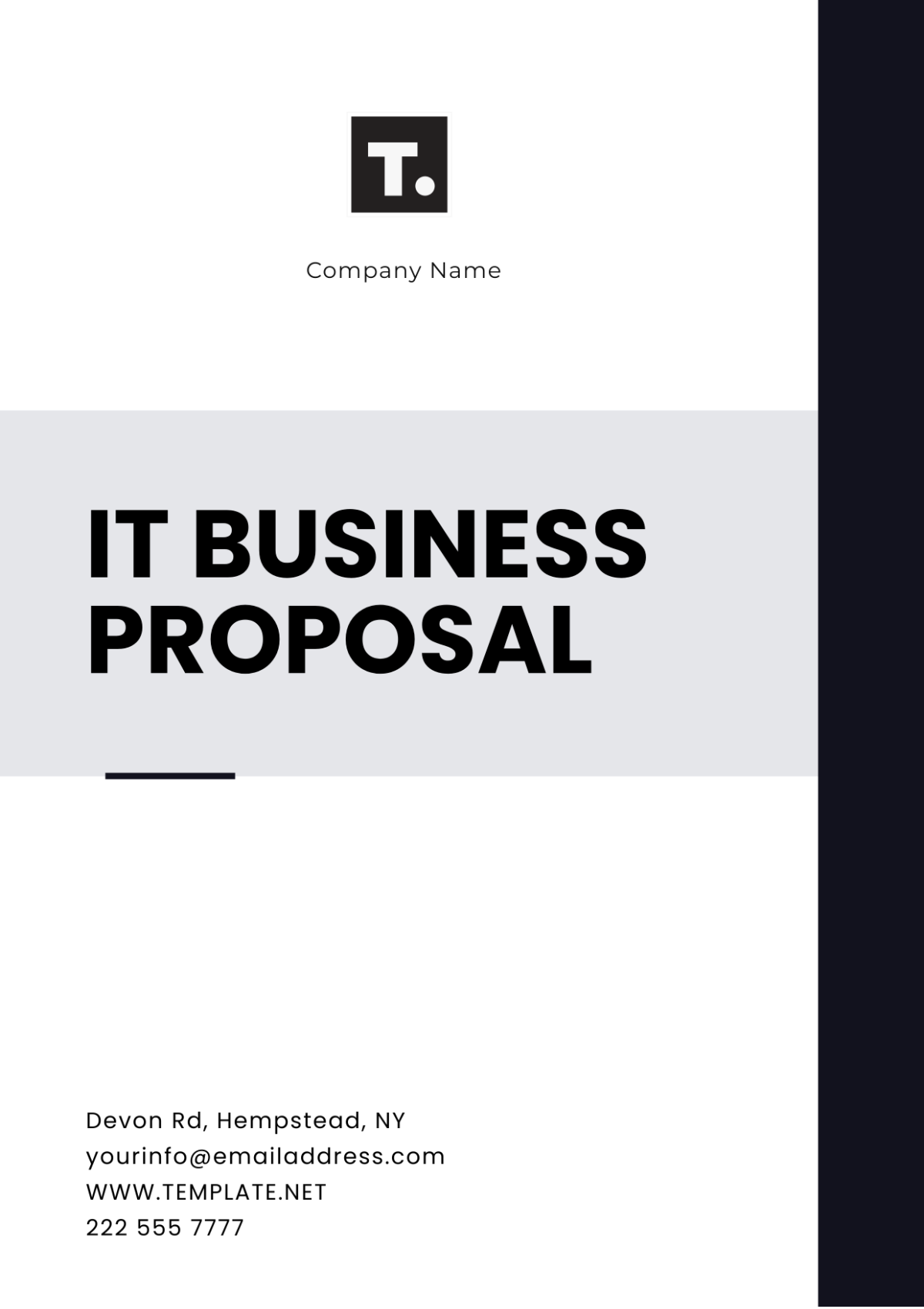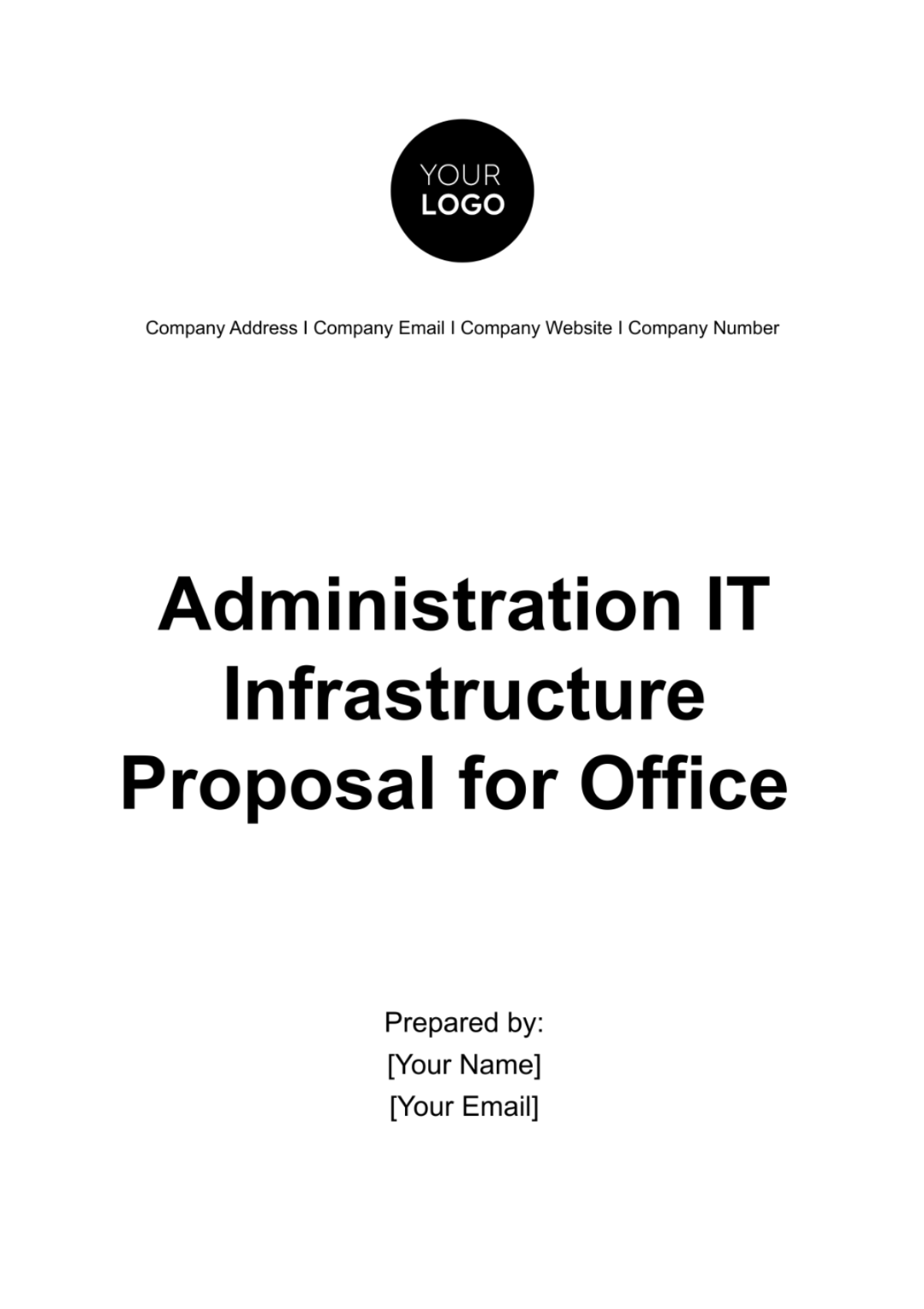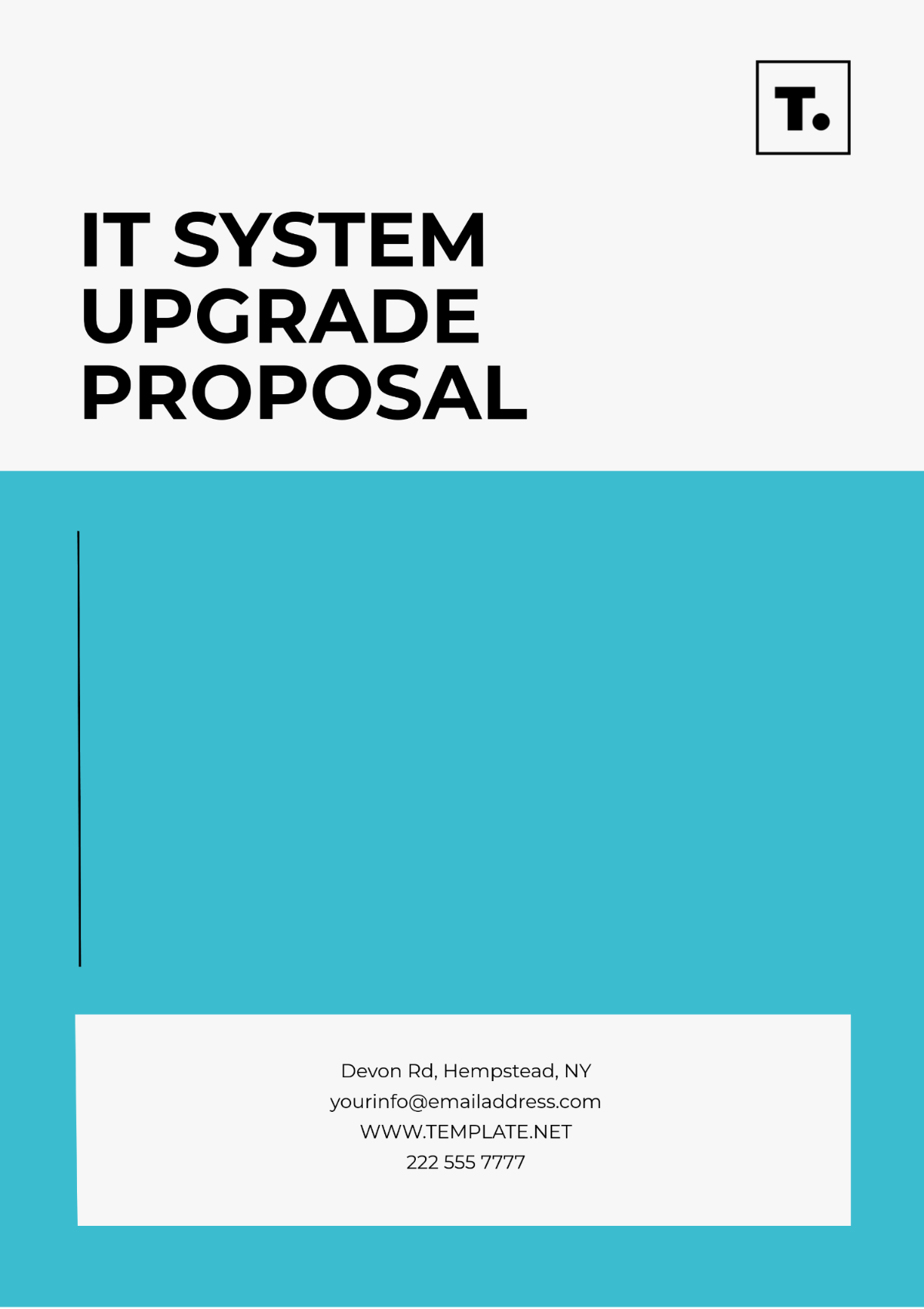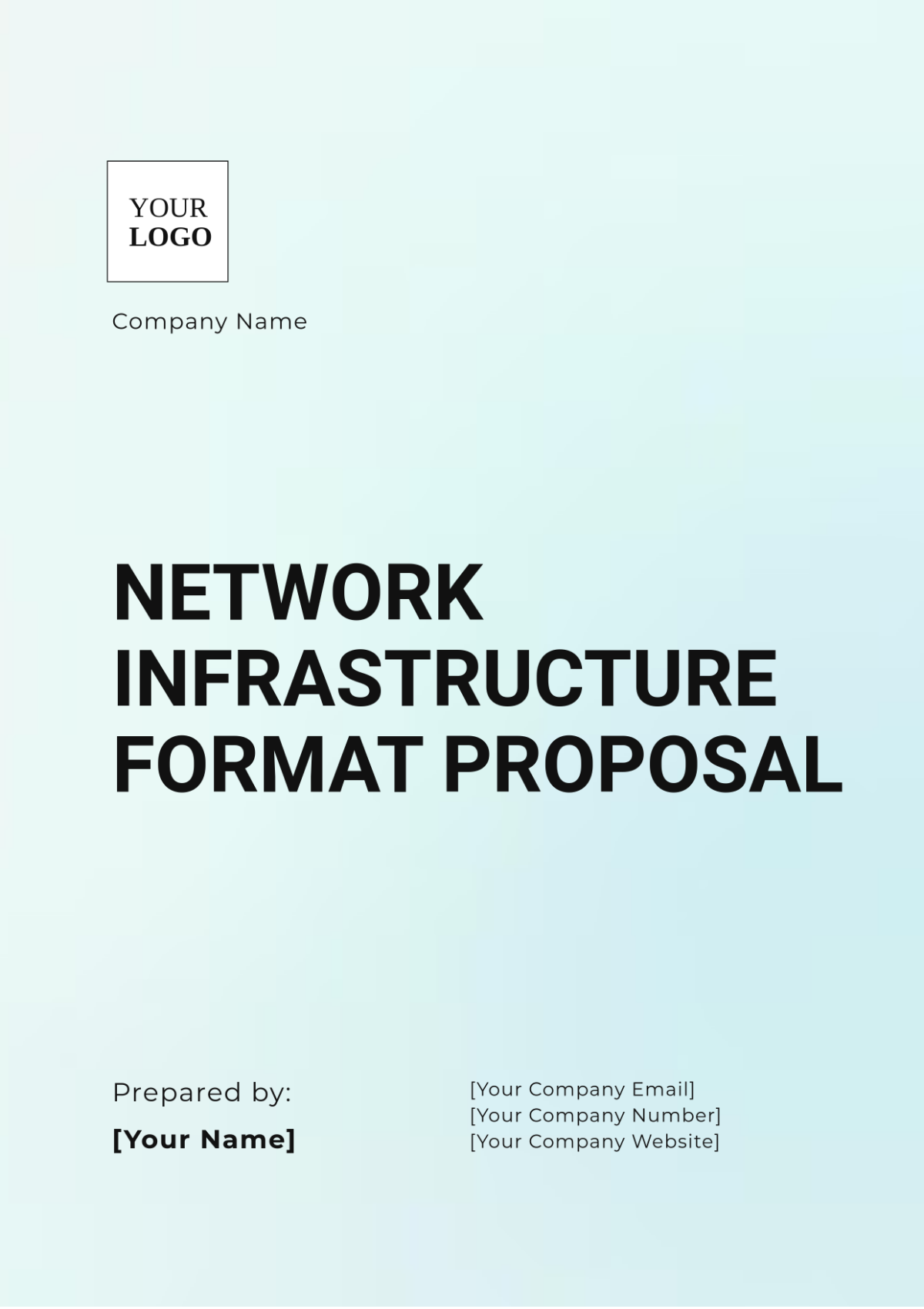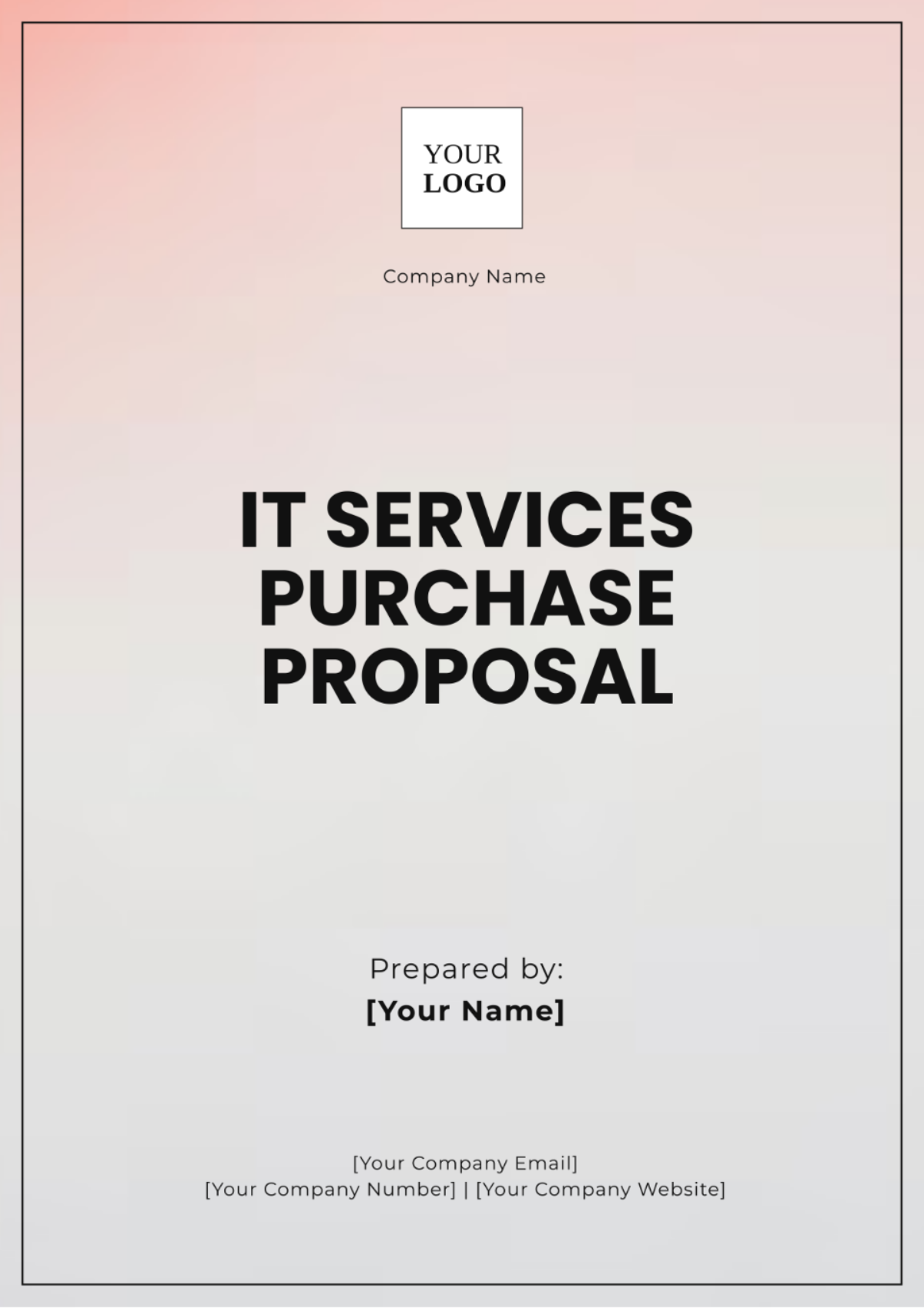Free IT Project Proposal Template
IT Project Proposal
I. Executive Summary
This IT Project Proposal outlines a strategic initiative to overhaul and modernize the existing IT infrastructure at [Your Company Name]. In anticipation of future technological developments and the company’s growth trajectory, this project focuses on scalability, security, and efficiency. By migrating to a hybrid cloud environment, integrating artificial intelligence (AI), and deploying advanced cybersecurity frameworks, [Your Company Name] aims to future-proof its IT operations through the year [2050] and beyond. The ultimate goal is to improve system performance by [30%], reduce operational downtime, and position [Your Company Name] as a leader in IT innovation within its sector.
This project spans an [18]-month timeline and encompasses several phases: planning, design, development, testing, and implementation. The project will require a budget of approximately [5 million dollars], covering hardware, software, cybersecurity, AI tools, training, and contingency. [Your Company Name] expects a strong return on investment, including reduced IT maintenance costs, increased operational efficiency, and stronger defenses against evolving cyber threats.
Successful completion of this project will enable [Your Company Name] to meet the demands of the digital future, support business growth, and ensure the IT infrastructure is flexible enough to adapt to changes in technology up to the year [2060] and beyond.
II. Project Objectives
The following objectives have been established to ensure the successful execution and implementation of the IT project. Each objective is aligned with [Your Company Name]’s broader strategic goals and has been designed to ensure long-term sustainability.
A. Upgrade of IT Infrastructure
1. Cloud Migration
Transition legacy systems and on-premises data storage to a hybrid cloud architecture by [2050], which will reduce physical server dependency and allow for flexible scaling of resources. Cloud migration will reduce data storage costs by [20%] and offer redundancy for business continuity.
2. Performance Optimization
Enhance the system’s overall performance by [30%], achieved through a combination of hardware upgrades, improved data processing algorithms, and better network configurations.
3. Uptime Reliability
Establish a service-level agreement (SLA) that guarantees [99.9%] uptime by introducing real-time monitoring systems, automated failover processes, and regular system health checks.
B. Security Enhancements
1. Cybersecurity Protocols
Introduce a multi-layered cybersecurity defense system, incorporating firewalls, intrusion detection systems, and encrypted communication channels. The framework will comply with ISO/IEC 27001 standards by [2051] and be adaptable to emerging cyber threats.
2. User Authentication
Implement biometric and multi-factor authentication (MFA) methods for enhanced user security across all internal systems. This will protect against unauthorized access and ensure compliance with global security standards.
3. Threat Response
Build a proactive threat detection system, leveraging AI to analyze user behavior and identify anomalies that may indicate security breaches. This system will enable real-time alerts and immediate threat neutralization.
C. Support Business Growth
1. Scalable Systems
Ensure the IT infrastructure is capable of supporting a [200%] increase in network traffic and user load by the year [2060]. This includes upgrading servers, network switches, and bandwidth capacity to accommodate future growth.
2. AI-Powered Tools
Deploy AI-based solutions to optimize business processes, enhance customer experience, and facilitate predictive analytics for better decision-making. AI will drive automation, eliminating repetitive tasks and freeing up human resources for higher-value work.
3. Future-Proofing
Design the infrastructure to be compatible with future technologies, ensuring seamless integration with new software platforms, updates, and potential expansions for the next [30] years.
III. Project Scope
The scope of this project is designed to fully upgrade [Your Company Name]’s IT infrastructure, ensuring the organization is ready to face future technological challenges. The project will address all critical areas of the IT environment and incorporate new systems that promote scalability, security, and operational efficiency.
A. System Infrastructure Upgrade
1. Hybrid Cloud Migration
Shift data storage and application hosting to a hybrid cloud environment, leveraging both private and public cloud services. This will provide flexibility, cost savings, and enhanced disaster recovery options.
2. Networking Upgrades
Implement 5G networking solutions across all company facilities to increase bandwidth, minimize latency, and support remote working environments.
3. Server Virtualization
Virtualize existing server environments, reducing physical hardware dependency, and improving flexibility for future expansions. Virtualized servers will also reduce energy consumption by approximately [15%], contributing to [Your Company Name]’s sustainability goals.
B. Cybersecurity Enhancements
1. AI-Driven Threat Detection
Deploy machine learning models to predict and mitigate cyber-attacks by identifying unusual patterns of behavior in real-time. This system will include automated responses to neutralize threats before they impact business operations.
2. Encryption Across All Channels
Apply end-to-end encryption for all communications within the company’s network, as well as for any data sent to external stakeholders, reducing the likelihood of data breaches.
3. Security Operations Center (SOC)
Establish a centralized Security Operations Center that will oversee security-related incidents [24/7], utilizing advanced monitoring tools and incident response protocols.
C. AI Integration
1. AI-Driven Analytics
Develop a comprehensive analytics platform powered by AI to monitor system health, predict performance issues, and offer actionable insights for optimization.
2. Customer Support Automation
Implement AI chatbots capable of handling routine customer inquiries, thereby reducing customer wait times and improving satisfaction by providing immediate responses to common problems.
3. IT Process Automation
Automate IT administrative processes such as software updates, system monitoring, and maintenance schedules using AI-driven tools. Automation will reduce manual labor by [60%], allowing IT personnel to focus on higher-priority tasks.
D. Software Development
1. Custom Applications
Build custom software applications designed to meet specific business needs, including enterprise resource planning (ERP) tools, customer relationship management (CRM) systems, and supply chain management platforms.
2. API Integration
Create an Application Programming Interface (API) system that allows internal applications to communicate seamlessly with third-party software, enhancing interoperability across different systems.
3. Agile Development Approach
Utilize Agile development methodologies to deliver continuous improvements and feature enhancements in shorter, iterative cycles, reducing the time-to-market for new software.
E. Training and Support
1. Comprehensive Training Programs
Provide in-depth training sessions for IT personnel and end users, ensuring a smooth transition to the new systems. Training will include hands-on workshops, webinars, and on-demand learning resources.
2. Documentation and Knowledge Base
Develop a detailed knowledge base and user manuals to assist employees in navigating the new systems. These resources will be regularly updated as the systems evolve.
3. [24/7] Technical Support
Offer [24/7] technical support for the first six months after the system launch, ensuring any issues are resolved swiftly to minimize disruptions.
IV. Project Deliverables
The successful completion of this IT project will yield the following deliverables, all designed to improve [Your Company Name]’s technological capabilities and position the company for long-term success:
A. Upgraded IT Infrastructure
1. Hybrid Cloud System
A fully operational hybrid cloud system capable of scaling to meet future demands.
2. Network Infrastructure
New virtualized servers designed to reduce costs, energy consumption, and hardware dependency.
3. 5G Network Infrastructure
Enhanced 5G network infrastructure with improved bandwidth and latency for faster data transmission.
B. Enhanced Cybersecurity Framework
1. Multi-Layered Cybersecurity System
A multi-tiered cybersecurity system that includes machine learning threat detection, encryption, and real-time threat response.
2. User Authentication
Biometric and multi-factor authentication protocols across all internal systems.
3. Security Operations Center
A 24/7 operational SOC that oversees the company’s cybersecurity defenses.
C. AI-Powered Tools
1. Analytics Dashboards
AI-powered analytics dashboards providing real-time insights into IT system performance.
2. Customer Support Systems
Automated customer support systems that reduce response times and enhance user experience.
3. Predictive Maintenance Tools
Predictive maintenance tools designed to reduce downtime and optimize system performance.
D. Custom Software Applications
1. Tailored Applications
Tailored applications for internal and external operations, designed for integration with the upgraded infrastructure.
2. API Integration
Seamless API communication between new custom-built systems and third-party software.
3. AI-Driven Tools
Fully operational AI-driven tools for data analysis, predictive maintenance, and customer support.
E. Training and Documentation
1. Training Materials
Comprehensive training materials, user manuals, and recorded sessions for continued learning.
2. Knowledge Base
A knowledge base that will be updated regularly as new features are introduced.
3. Support Team
A dedicated support team available for the first six months post-launch, ensuring smooth operation and quick troubleshooting.
V. Project Timeline
This project is divided into six key phases, spread over [18] months. Each phase is designed to focus on specific elements of the IT infrastructure upgrade.
Phase | Duration | Start Date | End Date |
|---|---|---|---|
1. Planning and Analysis | [3] months | January [2050] | March [2050] |
2. Design and Architecture | [4] months | April [2050] | July [2050] |
3. Development and Implementation | [6] months | August [2050] | January [2051] |
4. Testing and Validation | [2] months | February [2051] | March [2051] |
5. Training and Documentation | [2] months | April [2051] | May [2051] |
6. Go-Live and Support | [1] month | June [2051] | June [2051] |
VI. Budget Estimate
The estimated budget for the IT project is approximately [5 million dollars], allocated across several key areas:
Category | Estimated Cost |
|---|---|
Hardware Upgrades | [$1.5 million] |
Cloud Migration | [$1 million] |
Cybersecurity Enhancements | [$800,000] |
AI Integration | [$700,000] |
Software Development | [$500,000] |
Training and Documentation | [$300,000] |
Contingency and Miscellaneous | [$200,000] |
VII. Risk Management
Identifying and mitigating risks is crucial for the success of this IT project. The following risk management strategies will be employed:
A. Risk Identification
1. Technical Risks
Potential issues with new technology integration, such as compatibility problems or unexpected system failures.
2. Operational Risks
Risks associated with changes to business processes, including resistance from staff and potential disruption during the transition period.
3. Financial Risks
Budget overruns due to unforeseen costs or delays in project milestones.
B. Risk Mitigation Strategies
1. Technical Risks
Conduct thorough testing and validation before full-scale deployment. Establish a robust support system to address any technical issues promptly.
2. Operational Risks
Implement change management practices to guide staff through the transition. Communicate openly about the benefits of the new systems to gain buy-in from employees.
3. Financial Risks
Develop a detailed project budget with a contingency fund to cover unexpected expenses. Monitor financials closely throughout the project to ensure adherence to the budget.
C. Risk Monitoring and Review
1. Regular Reviews
Schedule regular project reviews to assess progress and identify potential risks early.
2. Risk Log
Maintain a risk log that tracks identified risks, mitigation actions, and the status of each risk.
3. Stakeholder Updates
Provide regular updates to stakeholders on project progress, including any new risks and the measures taken to address them.
VIII. Conclusion
This IT Project Proposal outlines a comprehensive plan for upgrading and modernizing [Your Company Name]’s IT infrastructure. By focusing on cloud migration, performance optimization, cybersecurity enhancements, AI integration, and custom software development, [Your Company Name] will be well-positioned to handle future technological advancements and business growth. The project, with its [18]-month timeline and estimated budget of [$5 million], aims to deliver a robust, scalable, and secure IT environment.
Successful implementation of this proposal will ensure [Your Company Name] remains at the forefront of technology and innovation, positioning the company for continued success well into the future.
Prepared by:
[Your Name]
[Your Position]
[Your Company Name]
